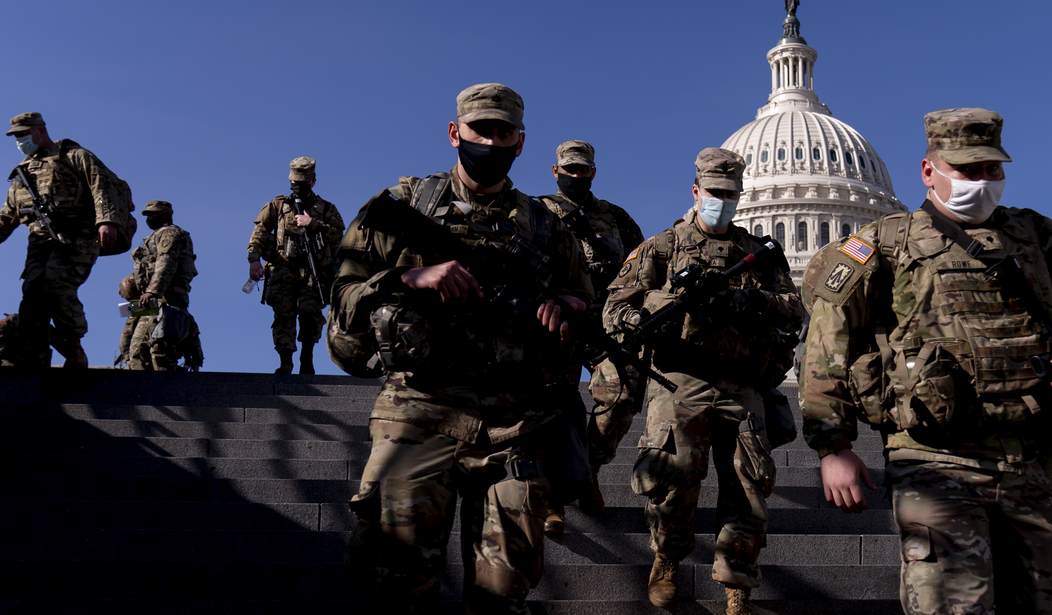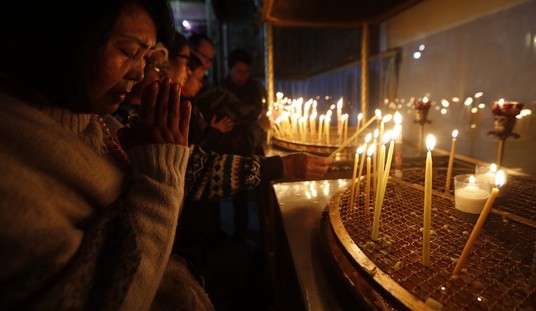A security review ordered by Speaker Nancy Pelosi and conducted by retired Lt. General Russel Honore in the aftermath of the January 6 attack on the Capitol is recommending that a permanent “Quick Reaction Force” made up possibly of National Guard troops be stationed around the Capitol.
“Our national capital is a prominent tourist destination, venue for many peaceful First Amendment activities, and a high-value target for foreign terrorists or domestic extremists, yet it has no dedicated QRF for response to crises,” the report notes. “We recommend establishment of a robust, dedicated QRF, not only for the [U.S. Capitol Police] but to serve the nation’s capital writ large.”
I don’t see any problem with that. We can have troops patrolling the Capitol just like any other third-world dictatorship.
The report lays out three options for the emergency response force, two of which would rely on National Guard troops:
-
Establish a QRF from existing federal law enforcement entities with appropriate legal authorities and appropriations to staff, train, and equip such a force.
-
Build a QRF under the command of the D.C. National Guard. This could be done by mobilizing military police from Guard elements across the U.S. on rotations of three to six months.
-
Create a QRF that permanently resides within the D.C. Guard by reestablishing a military police battalion and staffing it with Active Guard Reserve troops who live in or near the city year-round, perpetually on active duty.
There’s a question of who would command a QRF. Should it be the D.C. Guard Commander or someone at the Pentagon?
One of the chief complaints of Maj. Gen. William Walker, commanding general of the D.C. National Guard, in his testimony before Congress this month, was his frustration over having his hands tied by the Pentagon over the deployment of troops he had held in reserve on Jan. 6 as a quick reaction force.
“The standard component of such support is the stand-up of an off-site quick reaction force, an element of Guardsmen held in reserve for civil disturbance response, [equipped with] helmets, shields, batons, et cetera,” Walker said. “They are postured to quickly respond to an urgent and immediate need for assistance by civil authorities.”
Walker testified he couldn’t even move troops on traffic control duty one block over without express approval from Army Secretary Ryan McCarthy at the Pentagon.
“The Secretary of the Army’s January letter to me withheld that authority for me to employ the quick reaction force,” Walker testified. “I found that requirement to be unusual, as was the requirement to seek approval to move Guardsmen supporting the Metropolitan Police Department to move from one traffic control point to another.”
The security review recommends the D.C. Guard commander be given explicit authority “in extraordinary emergency circumstances where prior authorization by the president is impossible and duly constituted local authorities are unable to control the situation.”
Militarizing the Capitol building should be a temporary expedient, not a permanent feature. There are legitimate concerns about the security of the building, but soldiers in uniform not only deter rioters, they covertly threaten peaceful demonstrators as well. The “People’s House” should be as open as we can safely make it and permanently stationing National Guard troops to protect the Capitol building fails in that respect.










Join the conversation as a VIP Member